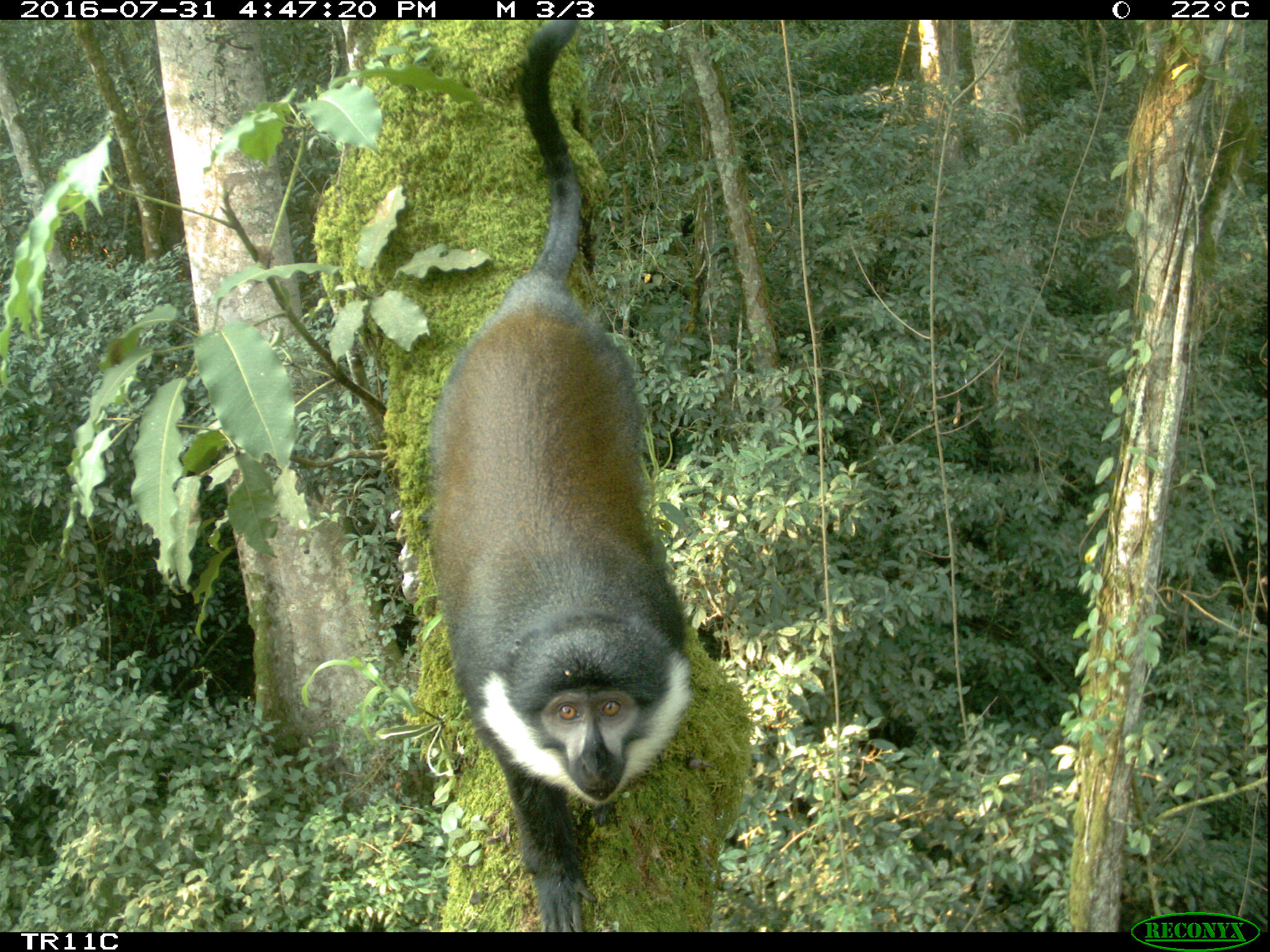A team of researchers says that combining standard camera trapping with new “arboreal camera traps,” where remote cameras are set high in trees, can result in more accurate population estimates of wildlife – particularly in hard-to-survey areas like tropical forests.
Publishing in the journal Animal Conservation, researchers from the Wildlife Conservation Society (WCS), University of Florida, World Wide Fund for Nature (WWF), and Rice University working in Rwanda’s wildlife-rich Nyungwe National Park deployed 54 arboreal camera traps set as high as 55 feet (17 meters), along with ground cameras, and walked traditional line transects. The arboreal cameras can detect species that have limited contact with the ground, including many primate species less likely to be detected with cameras at ground level.
By combining all three methodologies, the team counted some 35 mammal species including eight varieties of primate, twelve rodent species, three species of duiker, honey badger, side-striped jackal, and other wildlife. Twenty-four of the species were found using the combination of ground and arboreal camera traps. One of the arboreal camera traps even detected a new species for the park, the Central African oyan (Poiana richardonsii), a small carnivore species.
The researchers say that arboreal camera traps are still a new technology and that future research on the effects of camera orientation, deployment height, and other features could make them even more effective when used in conjunction of ground cameras.
Said lead author Jennifer Moore of the University of Florida: “The use of ground cameras and arboreal cameras together have the potential to detect all species within a given area. These cameras could prove particularly important in areas like tropical forest, where species detection rates are often low due to poor visibility.”
Said Felix Mulindahabi of WCS’s Rwanda Program: “Nyungwe National Park is a world class protected area. The addition of arboreal camera traps could improve future species monitoring programs.”
Five additional species known to occur in the park were not seen during this study: the owl-faced monkey, red-tailed monkey, African wild cat, and three species of mongoose. Three other species that historically occurred in the park – leopard, African golden cat and giant forest hog – have likely been lost to poaching.
###
WCS (Wildlife Conservation Society)
MISSION: WCS saves wildlife and wild places worldwide through science, conservation action, education, and inspiring people to value nature. To achieve our mission, WCS, based at the Bronx Zoo, harnesses the power of its Global Conservation Program in nearly 60 nations and in all the world’s oceans and its five wildlife parks in New York City, visited by 4 million people annually. WCS combines its expertise in the field, zoos, and aquarium to achieve its conservation mission. Visit: newsroom.wcs.org Follow: @WCSNewsroom. For more information: 347-840-1242.
Original post https://alertarticles.info
